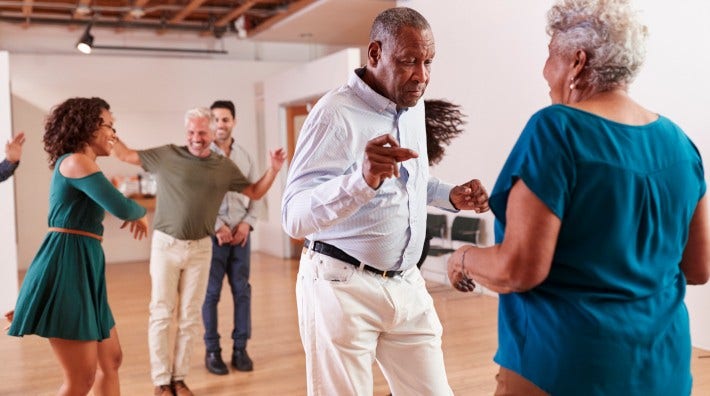Americans Need to Move More and Sit Less

Americans are still not getting enough exercise and now spend more time than ever sitting, according to researchers from the University of Iowa. They looked at data of 27,343 adults from the US National Health and Nutrition Examination Surveys for 2007 to 2016. Unlike previous studies, which looked at leisure-time activity only, this one looked at leisure-time, work-related, and transportation activity.
While certain groups reported increased activity, the authors found less than two-thirds (65.2%) reported they met recommended physical activity guidelines in 2015, up just 2% since 2007. This very slight increase is not considered to be a significant overall change.
During that same time, adults in the US significantly increased the time they spent sitting to more than 6.4 hours a day, up from 5.7 hours in 2007. The study was published July 26, 2019 in JAMA Network Open.
Not getting enough physical activity raises the risk for obesity, heart and vascular disease, diabetes, cancer, and earlier death. Sitting for many hours a day, even for people who get enough physical activity when they aren’t sitting, also increases these health risks.
The US Department of Health and Human Services, the American Cancer Society, and other health organizations recommend adults get at least 150 minutes of moderate intensity or 75 minutes of vigorous intensity activity each week (or a combination of these), preferably spread throughout the week.
Examples of moderate intensity activities include brisk walking, dancing, leisurely bicycling, yoga, golfing, softball, doubles tennis, and general yard and garden maintenance. Examples of vigorous intensity activities include jogging, running, fast bicycling, swimming, aerobic dance, soccer, singles tennis, and basketball.
Additional findings
- Older adults were less likely than younger adults to get enough physical activity. Less than half of those 65 and older (49.1%) met the physical activity guidelines.
- Some groups showed more improvement in meeting physical activity guidelines than others, including women, nonsmokers, and African Americans.
- Almost all groups showed increases in sitting time.
- The study looked at aerobic activity that lasted for periods of 10 minutes or more, but not muscle-strengthening activity. Experts say adults need 2 or more days a week of muscle-strengthening activities of moderate or greater intensity.
Tips to get up and get moving
Regular physical activity can significantly lower your lifetime risk for cancer, heart disease, and diabetes. Even small amounts of moderate activity throughout the day give you health benefits. Try these ideas for moving more and sitting less:
- Take the stairs rather than an elevator.
- Walk or bike to your destination.
- Exercise at lunch with your co-workers, family, or friends.
- Take a 20-minute exercise break at work to stretch or take a quick walk.
- Walk to visit co-workers instead of sending an email.
- Go dancing with a partner or friends.
- Plan active vacations rather than driving trips.
- Wear a pedometer or movement tracker every day to increase your daily number of steps.
- Join a sports or recreation team.
Use a stationary bicycle or treadmill while reading or watching TV.
- Reviewed by
- Citations
- Helpful resources

The American Cancer Society medical and editorial content team
Our team is made up of doctors and oncology certified nurses with deep knowledge of cancer care as well as journalists, editors, and translators with extensive experience in medical writing.
Trends in Adherence to the Physical Activity Guidelines for Americans for Aerobic Activity and Time Spent on Sedentary Behavior Among US Adults, 2007 to 2016. Published July 26, 2019 in JAMA Network Open. First author Yang Du, MD, MS. University of Iowa, Iowa City.
Fitting in Fitness tips from the American Cancer Society
Move Your Way tools from the US Department of Health and Human Services
American Cancer Society news stories are copyrighted material and are not intended to be used as press releases. For reprint requests, please see our Content Usage Policy.



